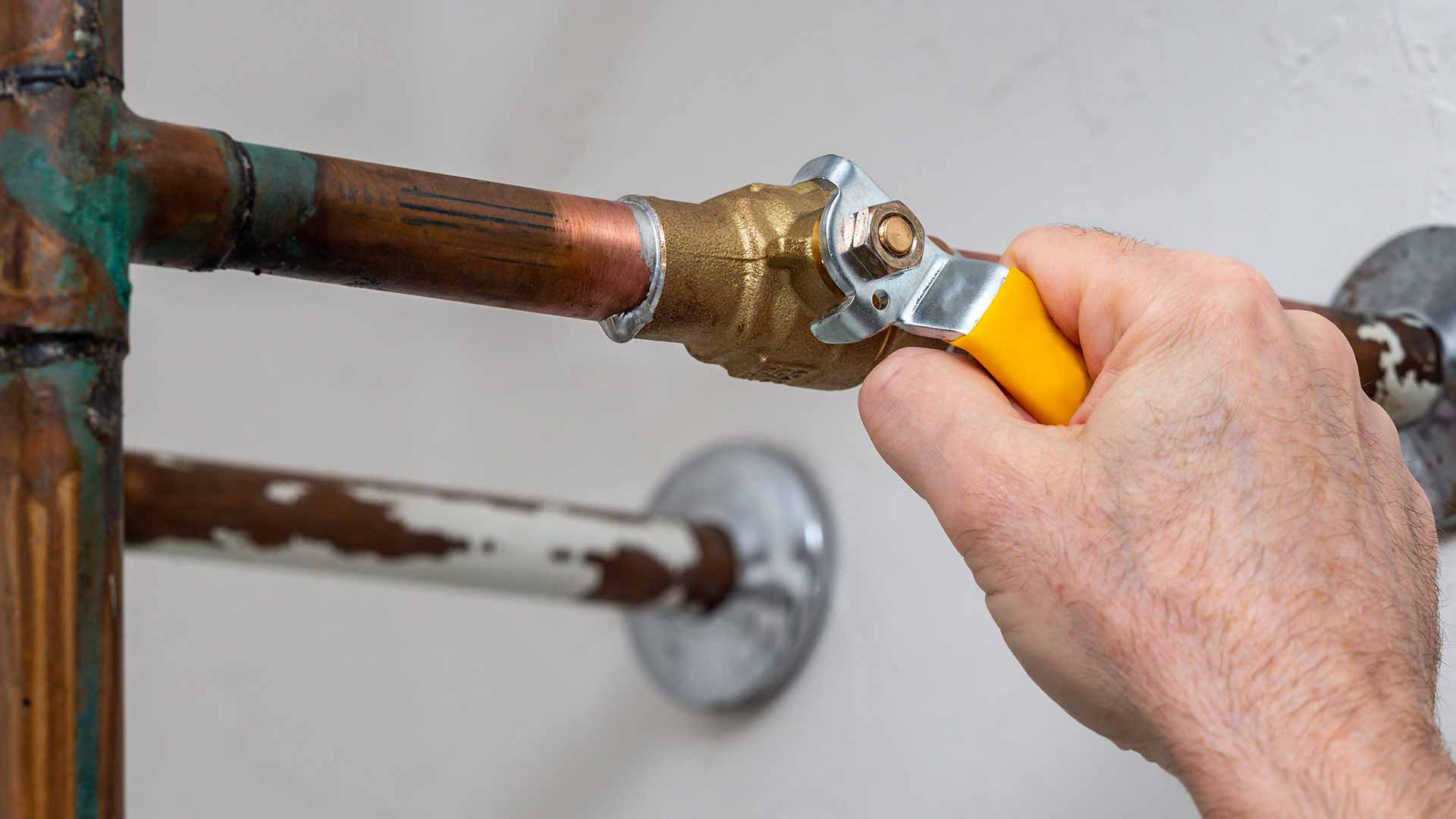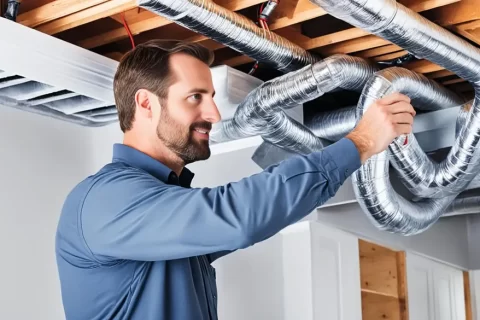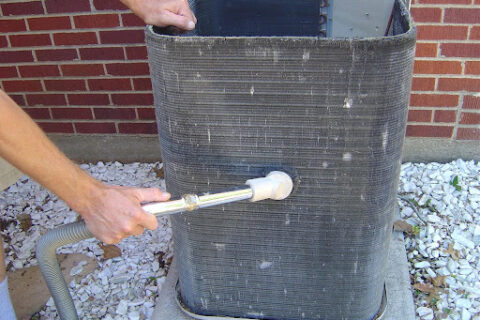How to Locate and Use Your Home’s Emergency Shut-Off Valve
Key Takeaways
-
Emergency shut-off valves are key components to plumbing systems. As you can see, they help prevent catastrophic water damage, control gas leaks, and ensure safety during emergencies. Knowing their locations is absolutely key to rapid response.
-
Typical places to look for water shut-off valves include basements, utility closets, and near water heaters. Typically, gas shut-off valves are located near appliances or gas meters. Electrical shut-off switches are found in the main electrical panel.
-
Shut-off valves may include gate valves, ball valves, butterfly valves, and pressure relief valves. Each has a unique function, whether for quick shut-off or pressure control, and are designed for specific applications.
-
To use emergency shut-off valves effectively, first learn their locations. Rotate them clockwise to close them, and periodically test their operation so you know they’ll work properly when you need them in an emergency.
-
Regular maintenance will help make sure these systems are dependable and prepared when disaster strikes. Check for leaks or corrosion regularly, clean to prevent debris buildup, and if damaged, replace valves.
-
When determining which shut-off valve to use, think about the utility type and the materials’ resiliency. Just be sure to select the right size and get professional installation for safe, efficient operation.
Whether in a home, business, or anywhere in between, knowing how to locate and use emergency shut-off valves will create a safer, more efficient environment. These valves instantly stop the movement of liquids or gases during emergencies. This action protects people from harm and saves taxpayers potentially millions of dollars in avoided damage costs.
You can often find them in factories, large businesses, and even in your own home. They’re located strategically around your property, near equipment or pipelines, so they can be accessed quickly. By understanding where critical resources are located, you can act quickly in an emergency or disaster.
Knowing how to operate them reduces mishaps and infrastructure collapse. Knowing where these valves are located and how to use them helps create safer communities and environments and decrease downtimes. Handling a gas line in a home is a serious responsibility.
The same goes for managing large systems in a manufacturing plant, which similarly requires a thick mental map of shut-off valve locations and uses.
What Are Emergency Shut-Off Valves
Definition of Shut-Off Valves
Emergency shut-off valves are crucial, life-saving devices in plumbing and gas systems. These valves, including the main water shutoff valve, quickly and safely shut off or reduce the flow of water or gas. They allow for very fine-grained control over utility services, which is essential during a plumbing emergency.
These valves provide additional public safety benefits by immediately stopping the flow when it is most needed. This ability is crucial in upholding safety standards and preventing extensive damage from situations like a burst pipe. Ball valves, gate valves, and stop valves are all common shut-off valve types used in various applications.
Each type has its unique design, suited for specific uses. Ball valves, for instance, have an excellent reliability record and are the most commonly used shut-off valve type on main water lines. In contrast, stop valves are typically located in each individual fixture, such as sinks, toilets, and hose faucets.
Beyond their role of functionality, shut-off valves contribute to plumbing efficiency as a whole. Additionally, you can quickly isolate specific areas when performing maintenance or repairs. This process minimizes the need to shut down the entire system.
This focused control not only saves time but also reduces disruption. Emergency shut-off valves are a major component in protecting public safety and ensuring our plumbing infrastructure works efficiently, helping to control a safe, efficient flow of utilities in both residential and commercial applications.
Importance of Shut-Off Valves in Emergencies
Quick access to emergency shutoff valves can be the difference between life and death. They’re incredibly important in plumbing disasters such as burst pipes or large leaks. These plumbing emergencies can escalate quickly, flooding walls, floors, and personal property if not addressed immediately. Knowing the valve location is crucial for effective action.
Shutoff valves automatically spring into action as the first line of defense. They completely halt water flow within seconds, stopping any additional damage from happening. For instance, a homeowner who knows the location of the main water shutoff valve can prevent a small leak from turning into a costly repair project.
Without the ability to turn valves off during emergencies, the safety impacts can be devastating. Plumbing failures can cause structural damage, mold, and costly remediation reconstruction. Understanding where these valves are located and what their function is extremely important for homeowners and renters alike.
It’s important to know where to find the main shutoff valve in case of an emergency. It’s typically found close to the water meter or where your main line comes into the house. Even individual valves, like those under sinks or behind toilets, can be lifesavers in preventing localized damage.
This preparedness not only protects property but ensures peace of mind, making it a fundamental aspect of home safety planning.
Common Locations of Shut-Off Valves
Water Shut-Off Valve Locations
Your main water shut-off valve is typically located where your main water line comes into your house. This location is usually in the basement, crawlspace, or utility room. This is a common location for water shut-off valves.
They’re often found next to water heaters or next to washing machines. These individual fixture valves let you isolate specific areas if you need to.
Outdoor shut-off valves are typically located along the outside perimeter of the home, often protected by casings or boxes that may need to be opened. These may be buried a bit or disguised, so look closely!
For instance, you may see one next to a front yard spigot or along the edge of a driveway. It may be helpful to look inside and outside the home to find all the valves.
To make things easier, you might consider developing a checklist of all valve locations to have on hand for quick reference during emergencies.
Gas Shut-Off Valve Locations
Gas shut-off valves are typically located near gas appliances like stoves and water heaters. You should be able to spot them at the gas meter in front of your home.
Understanding these locations is important for avoiding gas leaks. Make sure these valves are clearly marked, easily reachable, and not blocked by furniture or debris.
A valve for gas to a stove could be behind the stove. You should be able to access it easily without having to lift heavy items.
Painting or labeling these valves will ensure that everyone in the house knows exactly where to find them in case of an emergency.

Electrical Shut-Off Switch Locations
You’ll usually see electrical shut-off switches in the electrical service panel. Common shut-off valve locations typically are found in a basement, garage, or utility room.
Larger appliances such as dryers or HVAC systems may have dedicated shut-off switches in close proximity as well. Knowing how to turn off your electricity is key to staying safe in the event of flooding or other dangers.
To get ahead of things, you can draw up a basic diagram outlining your electrical panel and major shut-off locations. This additional step makes sure everyone in the household is on the same page about what to do, when it really counts.
Types of Emergency Shut-Off Valves
Emergency shut-off valves, such as the main water shutoff valve, are essential for controlling water pressure and flow in sudden scenarios. Understanding the valve locations and how they’re used will help assure an effective plumbing system that protects your family.
Gate Valves and Their Uses
Gate valves are generally used for on/off control of water flow. They work by moving up or down a barrier (the “gate”) to open or shut the valve. You may see these materials in service lines that connect to your home from the main water supply line.
Their robust design makes for a complete, uneventful flow when open. Gate valves are especially effective when it comes to minimizing pressure loss. Regular inspections are key to making sure these systems work when they’re most needed during emergencies.
Corrosion and debris can build up over the years, affecting their ability to function.
Ball Valves and Their Uses
Ball valves manipulate a spherical disc to regulate water flow and work best for applications that require fast shut-off. With only a 90° rotation, these valves shut off the flow, making them safe and dependable for high-pressure applications.
You’ll usually see them installed on individual fixtures, such as sinks or appliances like washing machines. Their ease of use and long-lasting capabilities have made them a go-to for homes.
Periodic inspection is required to ensure they don’t stick or corrode.
Butterfly Valves and Their Uses
Terfly valves have a rotating disc that controls the flow, which makes them perfect for high-flow applications like managing large volumes of water. Their light weight and small profile allows for effective operation in limited spaces, especially in industrial or large plumbing systems.
While they are currently not common in residential applications, professional installation and ongoing maintenance are key. This ensures that they work well as part of bigger networks.
Pressure Relief Valves and Their Uses
Pressure relief valves are safety valves that discharge excess pressure from your plumbing system. They’re an integral part of protecting water heaters and other appliances from damaging effects of overpressure.
These valves serve as a primary safety measure against overheating or excessive pressure and are commonly installed on water heaters. They need periodic maintenance to operate safely.
Knowing how they work means you’ll be able to respond faster in an emergency, protecting your home from dangerous situations.
How to Use Emergency Shut-Off Valves
1. Locate the Valve Quickly
Knowing the location of your emergency shut-off valve can save you time and costly water damage. Begin by identifying the layout of your home. Typical shut-off valves are located in basements, utility rooms, or near water meters.
These places often serve to identify the point of entry of the city main water line into the residence. If you don’t have any luck finding it inside, check along the ground floor perimeter of your house. Particularly watch outdoor faucets and the foundation!
Developing a transparent map of every utility valve and knowing their precise locations ahead of time is a real lifesaver in emergency situations. Knowing this information ahead of time cuts down on response time and allows other members of the household to quickly find the valve in case of an emergency.
2. Turn Off the Valve Properly
To turn off the water, turn the valve clockwise. This cuts off flow entirely. Squeeze hard, but don’t jerk. If the valve won’t budge, do not force it, as you may do further damage.
If the valve is hard to turn, steady pressure usually does a better job than brute force. Regularly practicing this process helps you get comfortable with it, so you can move with purpose in the event of an emergency.
3. Test the Valve for Functionality
Make sure to test your shut-off valve regularly to ensure it’s functional and ready to go in case of an emergency. If you can, turn it off and back on and see if it shows any resistance or sticking.
Should you see signs of stiffness, lube up the valve stem with a dry lubricant, such as silicone spray. Troubleshooting Regular testing not only confirms the valve will operate seamlessly when you need it most, but minimizes the chance of failure during emergencies.
4. Follow Safety Precautions During Use
Safety needs to be the first priority. If you have standing floodwater, shut off power at the breaker to minimize danger from electrical shock. Use gloves or other protective equipment if accessing valves in unclean or tight locations.
Remove anything around the valve so that it is unobstructed and easily accessible. If your visibility is limited, use a flashlight to get a better view. These basic precautions go a long way toward making any emergency shut-off quick, easy and safe.
Maintenance and Testing of Shut-Off Valves
Proper maintenance and regular testing of the main shutoff valve and other shutoff valves are key to ensuring they’ll work effectively during a plumbing emergency. Homeowners can help ensure their main water shutoff valve lasts longer by taking a few simple steps, which is the best way to protect the safety of their plumbing systems.
Inspect Valves Regularly
Scheduling routine inspections can be a quick and easy solution to identifying problems before they arise. Inspect for visible signs of rust, corrosion or leaks around the valve. These warn you of possible vulnerabilities that will break down when you need them the most.
By documenting inspection dates and findings, they can keep a record of the condition of each valve over time. If you’re able to spot a small leak early on, you can make a simple fix, avoiding more expensive damage in the future.
Regular inspections help to keep up with maintenance duties and prevent significant plumbing emergencies.
Clean Valves to Prevent Blockage
Over time, dirt and debris can build up around shut-off valves, causing them to become clogged. Using a soft cloth or small brush, remove any dirt, dust, or debris from the valve, focusing on any crevices.
Keep valve opening free from anything that could impede flow to ensure valve operation. Regular cleaning, maybe twice a year, keeps deposition at bay and makes the valve last longer.
Clean valves perform better and are less likely to fail in an emergency.
Test Valves for Smooth Operation
Operational tests to make sure shut-off valves don’t stick and fail to respond. Turning the valve off and on ensures the valve moves freely. If stiffness or resistance is encountered, lubricating the valve stem will return the valve to normal operation.
Testing the valve at least annually establishes that it is primed for emergency situations. This routine inspection can help identify wear and tear before it becomes a major issue requiring immediate maintenance.
Replace Faulty or Damaged Valves
Damaged or malfunctioning valves seriously compromise system integrity and must be replaced immediately. Consulting a licensed plumber experienced in industry-leading practices will help ensure that systems are safely installed and up to code.
Valves which are old or faulty might fail at the time of an emergency, resulting in extensive and costly water damage. Having spare valves readily available means that replacements can be made quickly, reducing the downtime should a valve fail.
Tips for Choosing the Right Shut-Off Valve
Consider the Type of Utility
When choosing a shut-off valve, the first consideration should be the type of utility it will be controlling. Each utility—water, gas, or even electrical systems—need the appropriate valve types to operate properly.
Gas systems often use ball valves, chosen for their tight seal and longevity. Conversely, water systems have long favored gate valves, which allow for more precise flow control. Electrical shut-off systems may require special switches instead of regular valves.
Selecting the best options for each individual utility and making sure they will work with that utility’s system will go a long way. Recognizing that each utility will have its own specific requirements will help you make your best choice.
For instance, you might select a valve that’s suitable for high water pressure or one that’s appropriate for use with flammable gases.
Assess Material and Durability
The biggest indicator of a shut-off valve’s durability is the material it’s made of. It additionally affects the overall effectiveness of the valve.
Brass and stainless steel are common and widely-used materials for water and gas distribution systems. They’re inherently corrosion- and wear-resistant for long-lasting, worry-free performance.
Corrosion-resistant materials, particularly for outdoor valves, can protect against rust or leaks due to exposure to the elements. Reading manufacturer specifications can help you determine whether the valve you’re considering is rated to handle the pressure or temperature ranges you’ll be using it in.
For example, valves that are utilized in hot water systems need to be able to withstand extreme heat levels without splitting.
Match Valve Size to System Needs
Selecting the proper sized valve is as critical as selecting valve type. A valve that is undersized may not have the capacity to provide the needed flow, and an oversized valve may cause pressure transients or surges.
To ensure the proper fit, measure the pipe the valve will connect to or consult plumbing codes for size requirements. For instance, a 1-inch pipe will require a 1-inch valve to minimize turbulence and maintain proper flow efficiency.
Incorrectly sized valves can lead to inconsistent water pressure, which can result in dripping faucets or non-functioning appliances. If you’re confused about sizing, a quick consultation with a plumber will save you time and potential future headaches.
Consult Professionals for Installation
It’s recommended for installing shut-off valves to be done by state licensed plumbers. Their expertise means accurate installation that fulfills building codes and warranties and installation that assures the valve fits snugly.
A trained plumber can check a valve’s condition and offer essential maintenance advice. Simple maintenance such as checking for leaks or deteriorating seals can help your valves last longer.
In larger or more complex plumbing systems, professional guidance is necessary to prevent expensive errors or system breakdowns.
Conclusion
Find emergency shut-off valve locations and usage guide. This information can save you from expensive damage and help save you stress during an emergency. These valves are not merely pieces of hardware. Here’s how they help keep your home or workplace safe during a water, gas or other emergency. That’s why regular maintenance and testing are important – it helps to make sure they’re ready to work when you need them most. Selecting the appropriate valve for your application goes a long way. Think about the type, material and ease of access, then make your selection.
Taking time to locate and maintain your shut-off valves now will save you time and money in the future. Remember, it’s better to be prepared than to be caught off guard. To learn more with more helpful tips and guides, visit our home and workshop hub to continue learning and help protect the people and things you love.
Frequently Asked Questions
What is an emergency shut-off valve?
An emergency shut-off valve, such as the main water shutoff valve, quickly and easily stops the flow of water during a plumbing emergency. It’s typically employed to avoid damage or danger in the event of a burst pipe or equipment malfunction.
Where can I find the main emergency shut-off valve in my home?
Usually, the main water shutoff valve is located close to your water meter or where the main water supply line enters your house, ensuring easy access during a plumbing emergency.
How do I use an emergency shut-off valve?
To close the main shutoff valve, turn it clockwise (right). If you can’t turn the valve by hand, use a pipe or crescent wrench. Always turn valves slowly to prevent damage.
How often should I test my emergency shut-off valve?
Test the main water shutoff valve and other shutoff valves at least every 6–12 months. Routine testing ensures they function properly during a plumbing emergency and prevents them from getting stuck.
What are the benefits of maintaining shut-off valves?
Proper maintenance of the main water shutoff valve helps avoid leaks, cuts repair costs, and improves safety by mitigating risk before plumbing emergencies occur, ensuring peace of mind for your home.
Are there different types of emergency shut-off valves?
Gate valves, ball valves, and globe valves are common types of valves, each serving crucial public needs such as controlling the flow of drinking water and managing water supply pipes for industrial supplies.
How do I choose the right emergency shut-off valve for my home?
Consider the supply type, such as water or gas, along with the condition of the main water shutoff valve and the type of material used. Consulting a qualified professional can provide the best expert advice for your specific plumbing issues.


